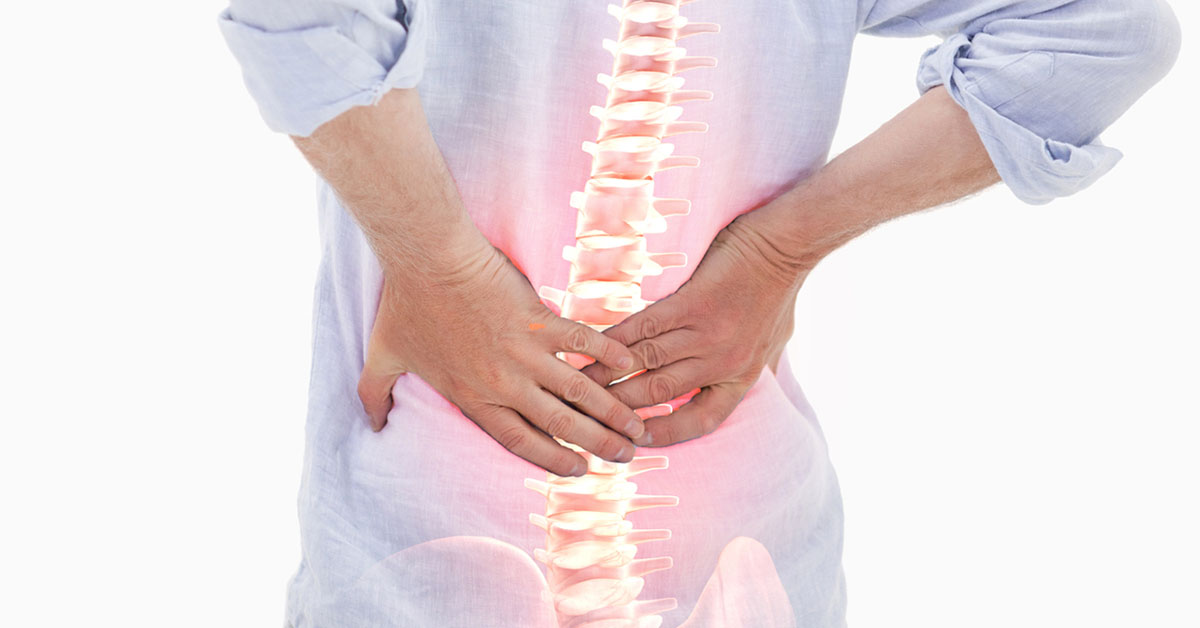
Adult Degenerative Scoliosis
Scoliosis generally develops during childhood, but it also can occur in adults. Adult refers patients who have completed their growth (i.e., they have finished going through puberty and are over the age of 18). Adult scoliosis is distinctive from childhood scoliosis in terms of the causes. In addition, the goals of treatment differ in skeletally mature patients.
Scoliosis is a musculoskeletal disorder that adversely affects the shape of the spine (backbone). There are normal (front-to-back) curves of the spine; however, scoliosis is a side-to-side curvature of the spine. Therefore, a scoliotic spine (when viewed from behind) will not be straight and may instead look like the letter "C" or "S", due to the side-to-side (right-to-left) curvature.
What is Adult Degenerative Scoliosis?
There are multiple classifications of adult scoliosis based on the cause of the abnormal curvature. One of these classifications is degenerative scoliosis. Adult degenerative scoliosis is relatively common form of adult scoliosis.
Adult degenerative scoliosis develops during adulthood due to degenerative changes, and it is typically seen in the lower back (lumbar spine). Degenerative changes in the vertebrae (bones of the spine) and intervertebral discs are common as a person ages. However, when these changes cause a side-to-side (right-to-left) curvature of the spine, the disorder is known as adult degenerative scoliosis. This abnormal curvature may progress a little each year. Adult degenerative scoliosis usually affects people 40 years of age or older.
Causes of Adult Degenerative Scoliosis
Adult degenerative scoliosis is caused by the combination of aging and wear & tear on the structures of the spine. As a result of these changes, the spine loses its capability to maintain its usual shape.
In older patients, mostly women, it is often associated with osteoporosis. As a result of osteoporosis, bones become weak and more likely to deteriorate because they are overly porous and brittle.
Osteoarthritis can also play a role in the development of adult degenerative scoliosis. Osteoarthritis is due to excess wear and tear on joints. It happens to everyone as they grow older; however, an excessive amount of wear and tear in the joints of the spine can lead to deformity. As a result, the spine will begin to collapse and an abnormal curve can develop.
Adult Degenerative Scoliosis Symptoms
Adult degenerative scoliosis occurs more often in the lower back (lumbar spine) and is accompanied by the loss of the normal, front-to-back (lordotic) curve in this region. Patients can experience a gradual loss of function and a decrease in the ability to accomplish daily activities.
Symptoms of adult scoliosis due to degenerative changes may include:
- Backache or low back pain
- Numbness, weakness and/or pain in the legs
- Spine curves to one side
- A hump may appear to be present on the back
- Uneven hips and/or shoulders (one is higher than the other)
How is Adult Degenerative Scoliosis Diagnosed?
The following are used to evaluate patients for adult degenerative scoliosis:
Medical History
This includes an interview with a doctor and a review of the patient's medical records. These are done in order to determine the presence any medical conditions that may be causing the spine curvature.
Physical Examination
A portion of the exam may be done while the patient is bending forward as this position makes it easier to visualize certain irregularities.
Items that will be looked for during the exam include:
- One side of the rib cage is higher than the other
- Significant asymmetry between opposite sides of the body
- Pelvis is tilted/uneven
- Shoulders are not level (one shoulder is higher than the other)
Imaging Studies
Adult patients with abnormal spinal curves, unusual back pain, or signs of underlying medical conditions will need imaging studies. These may include X-rays, CT scans, or an MRI of the spine, as well as the pelvis and hips. Which of these imaging studies will depend on what conditions are suspected to be involved in causing the scoliosis. The standard method for assessing the curve is to measure the amount (angle) of the curve. This measurement is determined from an X-ray of the spine.
